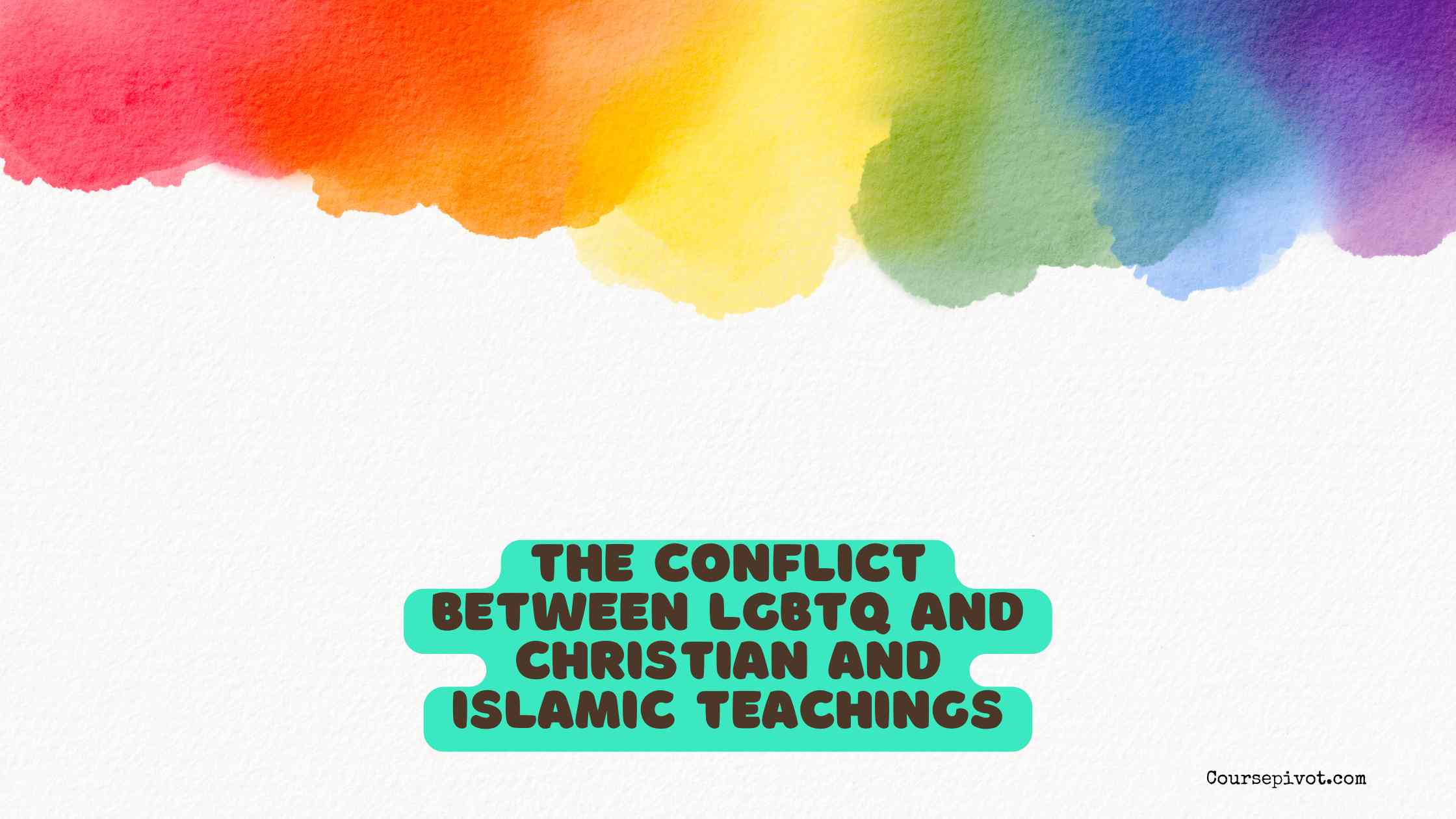
The Conflict between LGBTQ and Christian and Islamic Teachings
The topic of LGBTQ education in schools has sparked intense debate in Kenya and globally, particularly around the perceived indoctrination of children on gender identity. As discussions on gender fluidity, sexual orientation, and inclusive curricula gain traction, concerns arise about whether such teachings align with traditional religious values, especially those from Christianity and Islam, which hold significant influence in Kenyan society (over 80% Christian, 10% Muslim, per 2022 census data).
Table of Contents
This blog explores the issue of LGBTQ indoctrination, focusing on children and gender identity, and examines how it conflicts with core Christian and Islamic teachings. Drawing from educational policies, religious texts, and expert views, we aim for a truth-seeking perspective that highlights tensions without endorsing partisanship.
What Is LGBTQ Indoctrination in Schools?
LGBTQ indoctrination refers to claims that school curricula or programs impose views on sexual orientation and gender identity on children, often without parental consent or balanced discussion. In the U.S. and similar contexts, this includes lessons on gender diversity, pronoun usage, or inclusive history, which critics argue confuse young minds on gender norms. For example, Pew Research Center’s 2024 survey found 60% of U.S. teachers uneasy discussing LGBTQ issues, with 40% believing they shouldn’t be taught in schools. In Kenya, while formal LGBTQ education is limited due to conservative laws (e.g., Section 162 of the Penal Code criminalizing same-sex acts), global influences via media and NGOs raise fears of subtle indoctrination on gender identity.
Why It Matters: Opponents see it as undermining family and religious values, while supporters view it as promoting inclusion for LGBTQ youth (1 in 5 U.S. teens identify as LGBTQ, per 2023 CDC data). The conflict centers on whether such education is neutral or biased toward non-traditional gender views.
Focus on Indoctrination of Children on Gender Identity
Gender identity education teaches that gender is a spectrum, with concepts like non-binary or transgender identities. Critics argue this indoctrinates children, confusing them about biological sex and encouraging premature decisions on gender. For instance, the APA’s 2022 guidelines discuss gender dysphoria but note it’s rare (0.005–0.014% of population), yet schools may introduce ideas early, leading to concerns of social contagion—studies show a 4,000% rise in youth gender clinic referrals since 2010 in the U.K. In Kenya, where gender education is minimal, exposure via online platforms or international curricula sparks fears of cultural erosion.
Common Concerns:
- Early Exposure: Lessons on gender fluidity (e.g., “you can choose your gender”) may lead to confusion, with 20% of U.S. teachers reporting unease in a 2024 Chalkbeat survey.
- Parental Rights: Bills like the U.S. Equality Act raise fears of overriding parents, as noted in a 2019 ERIC report.
- Psychological Impact: Critics cite a 2023 APA statement on dysphoria, warning that early affirmation may not address underlying issues.
In Kenya, with 85% Christian/Muslim population, such teachings are seen as conflicting with religious norms on binary gender.
Conflict with Christian Teachings on Gender Identity
Christian teachings, based on the Bible, affirm a binary view of gender as God’s design. Genesis 1:27 states, “God created humankind in his image, in the image of God he created them; male and female he created them,” emphasizing male-female creation. Conservative sources like The Gospel Coalition (2023) argue transgenderism contradicts this, viewing gender dysphoria as a result of the Fall (sin’s corruption), not God’s intent. Focus on the Family (2025) calls gender confusion a “dysphoria” to be addressed through faith and counseling, not affirmation.
Key Conflicts:
- Indoctrination vs. Biblical Truth: Schools teaching gender as fluid contradict Christian views of fixed, God-given identity, seen as “against God’s design” in a 2022 STR.org article.
- Sexual Orientation: Assemblies of God (2023) teaches homosexuality as sin, per Leviticus 18:22, clashing with LGBTQ inclusion curricula.
- Youth Influence: A 2024 Youth Pastor Theologian post warns gender education undermines biblical teaching on sex and gender.
In Kenya, with 70% Christian population, such curricula are viewed as moral erosion, conflicting with family teachings.
Conflict with Islamic Teachings on Gender Identity
Islamic teachings, from the Quran and Hadith, affirm a binary gender system as Allah’s creation. Quran 53:45–46 states Allah creates male and female from a drop of sperm, emphasizing fixed identities. Yaqeen Institute (2022) frames gender dysphoria as a test, not to be acted upon by changing one’s body, as altering creation is forbidden (Quran 4:119). Homosexuality is prohibited (Quran 7:80–84, story of Lot), with scholars viewing LGBTQ education as promoting sin.
Key Conflicts:
- Indoctrination vs. Divine Design: Teaching gender fluidity contradicts Islam’s view of fixed male-female roles, seen as “against Allah’s will” in a 2022 Fiqh Council fatwa.
- Sexual Orientation: MPV (2023) notes Quran doesn’t explicitly condemn homosexuality but emphasizes male-female relations; conservative views ban it.
- Youth Protection: Islam365 (2023) warns LGBTQ education confuses children on gender, clashing with teachings on modesty and family.
In Kenya’s Muslim communities (10% population), such curricula are opposed as cultural imperialism.
Practical Tips for Addressing the Issue
- Parental Involvement: Monitor school curricula; opt out if conflicting with faith, as per U.S. rights in a 2022 NEA guide.
- Faith-Based Education: Teach children religious views on gender at home or through community programs.
- Advocacy: Support bills protecting parental rights, like Trump’s 2025 executive order restricting gender education.
- Balanced Dialogue: Engage schools for inclusive but respectful curricula, per a 2021 PMC study.
Things to Avoid
Don’t assume all LGBTQ education is indoctrination—some promote inclusion without bias. Avoid confrontational approaches; dialogue fosters understanding. Don’t ignore children’s questions on gender—address them with faith-based guidance.
Tailoring to Your Faith
Christians: Use resources like Reformed Faith & Practice for biblical discussions. Muslims: Refer to Navigating Differences for Quran-based ethics. Adjust based on your beliefs for family harmony.
Read 10 Signs Your Wife Is Sleeping With Another Woman (Lesbian)
Key Takeaways
LGBTQ education in schools raises concerns of indoctrination on gender identity, conflicting with Christian teachings (binary gender from Genesis, dysphoria as sin’s result) and Islamic teachings (fixed male-female creation, altering body forbidden). In Kenya, this clashes with religious majorities, echoing U.S. debates where 60% of teachers are uneasy. Early exposure may confuse children, per critics, while supporters see it as inclusive. By monitoring curricula, teaching faith values, and advocating, families can navigate this.
Cite this article
You can copy and paste your preferred citation format below.
Martin, L. & Arquette, E.. (2025, October 3). The Conflict between LGBTQ and Christian and Islamic Teachings. Coursepivot.com. https://coursepivot.com/blog/the-conflict-between-lgbtq-and-christian-and-islamic-teachings/



